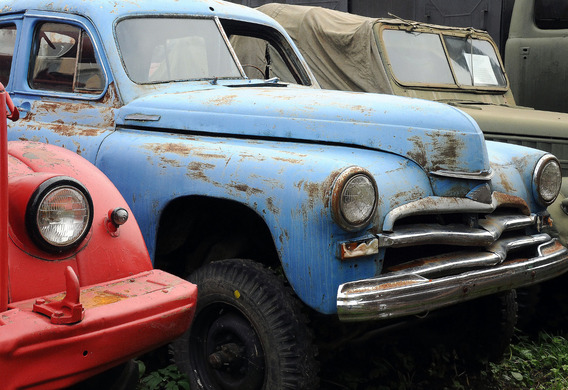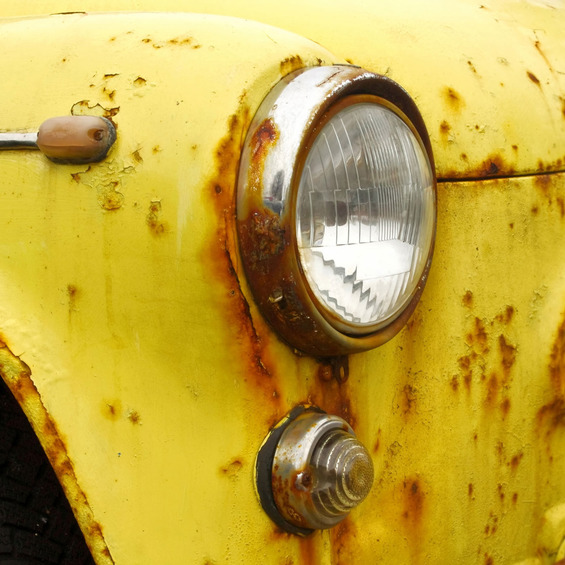
Corrosion of the body is both a natural property of the metal and a very serious problem for motorists, especially in countries with bad climate. Even the body of a new car can quickly fail if certain technological standards are not met.
Salvation from the corrosion of the car, the body of which has started to rust-a question of a separate article for professionals engaged in culting. When a certain age of the body reaches a certain age, it can only be repaired by major repairs, and this is expensive and not always effective, especially if poorly trained people are taken over. Therefore, the durability of the body is entirely dependent on preventive measures, which should be taken almost immediately after the purchase of the car.
Main reasons for corrosion and the most dangerous locations
The first place of insecurity is unconditionally occupied by the bottom of the car. The bottom of the modern models over the layers of paints and primers are covered with a special substance like rubber, called polyvinyl chloride (PVC) plate, which protects the varnish and metal coatings and is capable of excluding corrosion for long years, but after two, in extreme cases, three winter seasons and it begins to collapse.
The beggar is in a relatively win-win position, as it is flat, and the wings of a modern car have a complex shape, including the sinuses in which road dirt accumulates. The wings are relatively easy to change, so the plates are not accepted, but the manufacturers are well aware of the problems associated with them, and the cars have been supplied with the tires for a long time, effectively preventing dirt on the surface of the details.
There are a number of components in the car design that have a tubular section. First of all, these are the thresholds, the racks and the longgers-the elements that make him stiffness. These parts are carefully sealed in factory conditions after welding, but there are technologically holes in them (for example, to drain the water after the reek). The holes are fastened with rubber stubs, however, as a result of friction over the ground or snow, they can jump out and water or dirt will flow into the hole. If this happens, the hole may be blocked and corrosion will begin.
Ways and means to prevent the emergence of corrosion
The main and most significant operation that the owner can carry with his car is to cause the anti-corrosion protection layer on the bottom and in the inner parts of the tubular cross section. This can be done in a specialized technical center and even independently, if there is a place to do it, and there is also a set of special tools. However, if the car is not new, the protection of the bottom is considerably complicated, as there is dirt on its surface, as well as on the bottom parts of the suspension. Therefore, in order to do a protective mastic, it is necessary to first make the bottom of the bottom. Since it is possible to make it only where there is not only water and machine to serve it, but also the lift, and therefore the anti-measles application will most likely have to be addressed to a specialized technical center. By the way, water from the bottom alone is not washed away, and a skilled wash will need some kind of chemical that can dissolve persistent pollution.
In the bottom of the bottom, you may find that the factory surface has broken down in some places. In this case, it is necessary to remove the remaining balance, rather than try to "mend" the new layer of anticortex.

After the wash and before applying the protective mastic of the bottom and the internal cavity of the parts (if you suspect that water is in them) must be thoroughly dried. It takes a few hours, and ideally, 24 hours.
The internal cavity of parts with a tubular section should also be filled with protective composition, and spraying inside the rapids and the lower part of the rack is already part of the "mandatory program" of the centers specializing in anti-cortex.
In addition to the parts covered by the paint layer, almost any car can find chrome elements. Chrome is a good decorative surface, but a bad defense, because it is produced by an electrochemical process called anodizing, and it has a high voids content. As a rule, steel parts are covered by one or more layers of nickel, and under them copper, but the water penetrates through porous chromium and oxidizes the inner surfaces. Thus, rust under chromium can occur, but will be hidden.
You must monitor the state of the adorners. Naturally, if the car regularly arrives in the wash, the chrome surfaces are cleaned of dirt and the potential for corrosion is reduced. However, if the car is often not available, you still have to keep track of the chrome details, and it is highly unwelcome to wipe them with a dry rag. All layers of coatings (copper, nickel, and chrome) are very thin, and even rough tissue can damage them. Therefore, it is recommended that the rag be cleaned up by a special purifier and do not clean up the details too often.
The colourful coating of the car requires even more careful care. In addition to being scratched and destroyed in the course of exploitation from contact with fine particles of sand, which are on all roads without exception, it is subject to other effects. For example, it often appears on the nose, especially at the nasal parts, from the impact of stones and other solid objects. In the winter period, the paint, even the most beautiful, like asphalt and concrete, is destroyed by the cycle of the freeze/detation as the water molecules inevitably penetrate into pores, which even seem to be perfectly level coatings. It's freezing, the water is expanding and acting on the microparticles of the paint, "swaying" them.
A good way to slow down the destruction is to use transparent protection based on wax or polymers.
Polymeric coatings are produced in the form of polymers. For their application, it is necessary to thoroughly wash the car with the vehicle shampoo, then apply the primary-care, and in the end the polyrole, which is to be immediately distributed across the whole surface, is best done with the help of a special machine with soft felt circles.
Protective forces on the basis of such careful preparation and additional "polishing" are not required. They can be applied in the washing process, after drying of the body.
By using wax, you need to know all of its properties to see whether you are satisfied with this coating or not. The point is that the wax-sticky substance, even in microscopic doses, and the smallest particles of sand, that is, dust, will inevitably be attached to it. This must be taken into account by selecting the type of protective coating. It is also important to remember that special shampoo will have to be used to remove the wax layer. Silicon is also added to polymeric base, and the resulting composition has antistatic properties, that is, the dust is not drawn to it and does not apply, and the special means for removing polymers will not have to be applied.
There are protective features to protect both chrome and painted parts for a longer period of time: it is a protective transparent layer of film and ceramic lacquer. The film is the most radical remedy, since it protects not only abrasive particles but also stones. The cost of the lake watering on the Russian market can certainly be considered a certain minus. For example, the label of the front part of the Nissan Pathfinder (headlights, bumper, hood and wings) will cost about 25 thousand rubles.
The inconvenience of using varnish is to pre-polish the car, which is also expensive.
If you found a corrosion-body on the body
If in any place the metal was still naked, and you did not notice it, surface corrosion could begin. To combat this phenomenon, the affected area should be carefully cleaned with a sandpaper and then processed by a special composition called the rust transducer. There is a huge number of proposals on the market, and the efficiency of each tool needs to be dealt with a long time, but in general they work as: active substances (acid, for example) are part of the chemical reaction with rust, turning it into a different, inactive chemical compound. It looks like a gray bloom, and it's essentially a primer. After treatment, it is not necessary to clean up the formed soil we need to clean the area with water, then degreasing and embellating.







